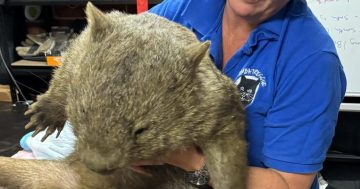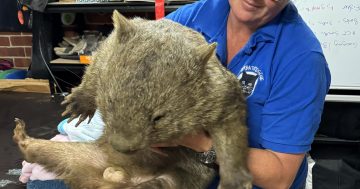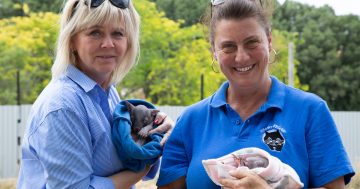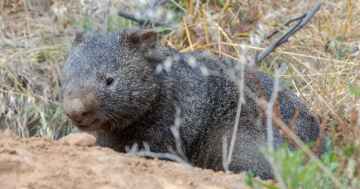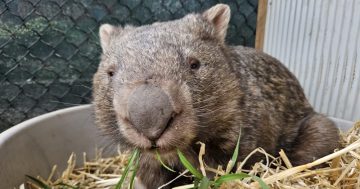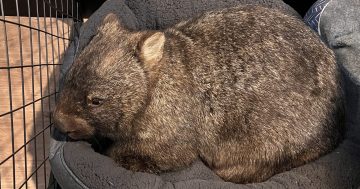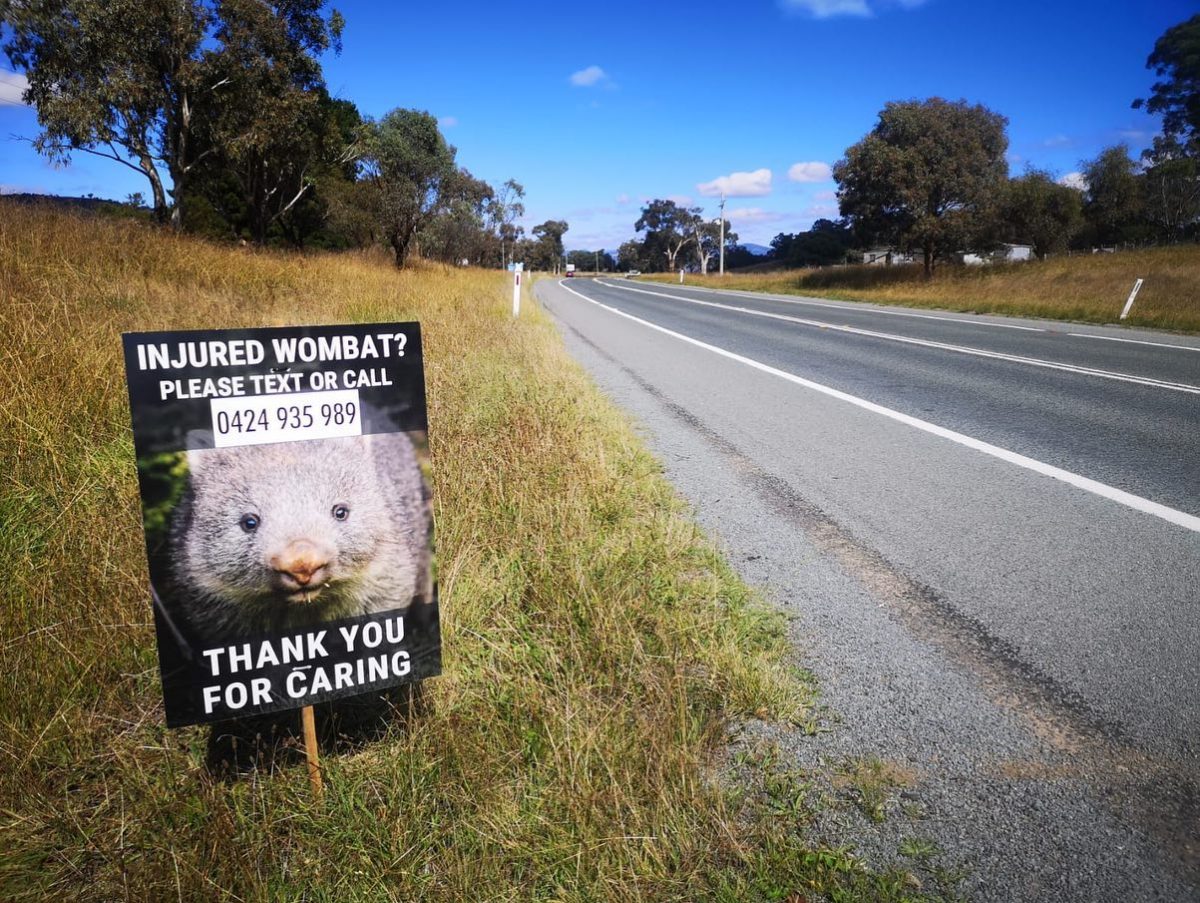
Wombat road. Photo: Wombat Rescue.
The phone rang.
“There’s a mangy-looking wombat near the leisure centre and he looks pretty sick. Can you come out and help him?”
Yolandi Vermaak turned up a short while later, armed with the necessary medicine. But just as she was about to deliver the life-giving injection, the wombat bolted out of her arm, across four lanes of traffic and into the hills.
Turns out he does that a lot.
About a month ago, Yolandi from Wombat Rescue was notified of a wombat that runs the gauntlet between 4 pm and 5 pm each day along Athllon Drive, crossing from the Urambi Hills Nature Reserve to the Lakeside Leisure Centre in Tuggeranong just as peak-hour traffic charges through at 80 km/h. After all, the grass is greener.
“I spoke to staff at the leisure centre and they told me he regularly comes to graze,” she says.
“He also crosses Anketell Street to the apartment complexes on the other side. A resident told me that he’s on her lawn every day. And a lot of other people are texting me to say they just saw him run in front of their car, or they just stopped cars so he could cross safely. He clearly loves this area and he’s clearly loved.”

Athllon Drive – not the wombat’s natural habitat. Photo: Google Maps.
Wombats are naturally nocturnal, tucked away in their burrows during the day and roaming their territory for food once the sun sets. But Yolandi says a sickness such as mange can prompt a change in this behaviour.
“They crave sunlight because they are losing hair and need warmth. When they start getting better, they go back to their nocturnal selves.”
Canberra’s frigid winter conditions often mean wombats are out and about earlier in the afternoon too, so Yolandi can’t be certain this particular one will change.
“And even if he does, he will still cross the road, just a bit later.”
Yolandi is reaching out to Roads ACT to ask for a temporary warning sign to be installed.
“I would love to see one of those trailer-mounted, solar-powered variable signs displaying a message along the lines of, ‘Slow down, there’s a wombat living here’,” she says.

Yolandi Vermaak, founder of Wombat Rescue with a special firend. Photo: Wombat Rescue.
She also plans on contacting ACT Parks and Conservation to ask for the holes in the fence to be patched, sealing off his exit from the nature reserve.
“We need to do something,” she says.
“Relocation isn’t really an option because there are a lot of hoops to jump through, and catching him is extremely difficult. We would also have to find somewhere that’s free of cars and roads and other wombats.”
Yolandi founded Wombat Rescue in 2018. She works full-time but manages to fit in road rescues, training sessions, and mange treatment most mornings and evenings.
She says the issue stems from the fact wombats don’t have to be considered in environmental impact reports for new developments.
“They look at endangered animals and grass and trees, but they don’t pay any attention to wombat burrows.”
Those that survive the heavy machinery are often pushed into another wombat’s territory, and because wombats are intrinsically territorial, this turns messy very quickly.
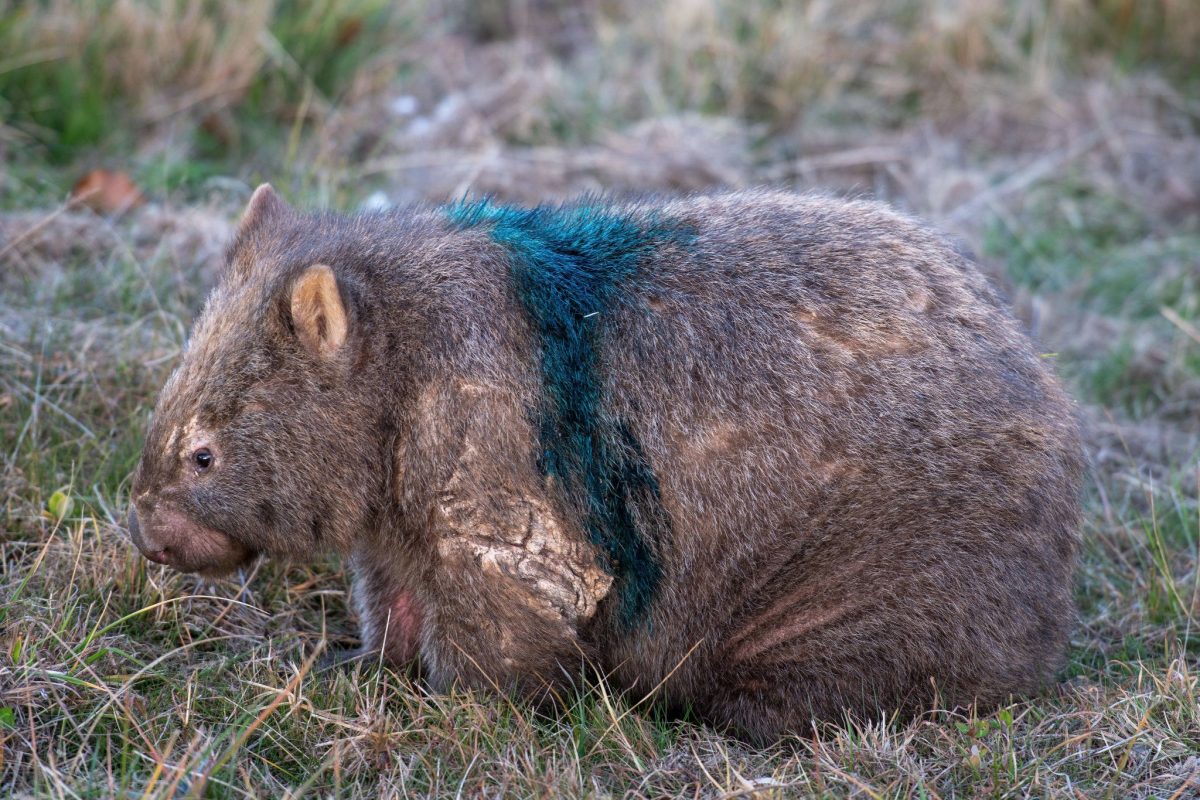
Wombat suffering from mange. Photo: Wombat Rescue.
“If there are too many males in an area, they kill each other,” Yolandi says.
“What developers and governments don’t understand is that this keeps adding pressure on rangers and local wildlife groups like myself because we’re the ones who have to pick up the pieces.”
She also cites cases in recent regional developments such as Googong where residents have had wombats dig up their lawn or burrow under their porches.
“But because they’re not sick, we’re not allowed to relocate them. There’s nothing I can do about them.”
It seems wombats are in a bit of a hole.












